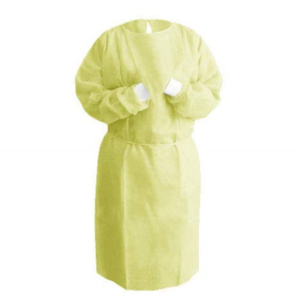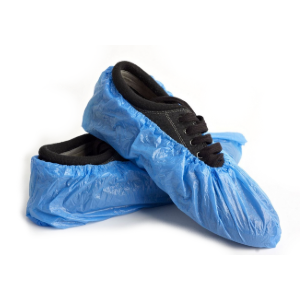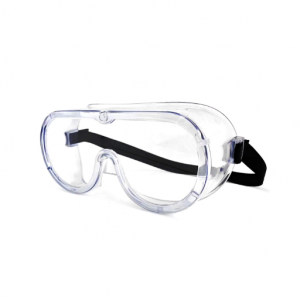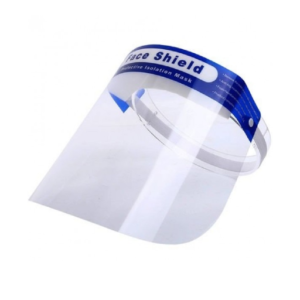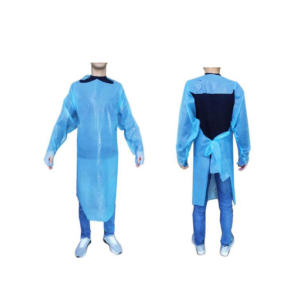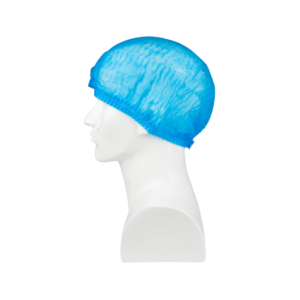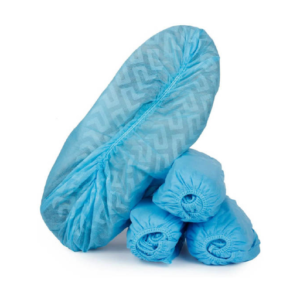Personal Protective Equipment (PPE) is essential for safeguarding workers from a range of hazards, including chemicals, biological agents, radiation, and physical threats. By creating a barrier between the wearer and potential dangers, PPE protects critical areas such as the eyes, nose, and mouth. In healthcare settings, PPE is crucial for shielding medical professionals from infectious diseases like COVID-19, caused by the SARS-CoV-2 virus. Beyond high-risk environments, PPE, such as face masks, is commonly used to prevent the spread of common illnesses like colds and flu, safeguarding both patients and staff.
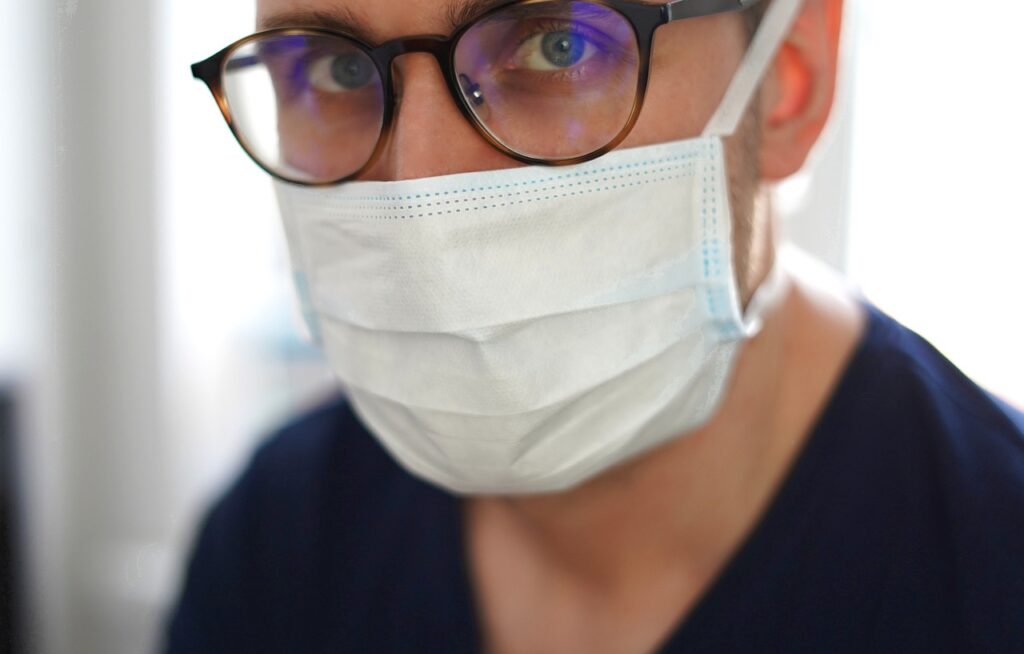
The types of PPE needed in a healthcare setting depend on the situation. For example, certain types of PPE are used on typical days whereas other types are used during a disease outbreak or pandemic. A full range of PPE is needed if physicians, nurses, and other medical staff need protection from contagions that can be inhaled, ingested, or shared through contact with a patient’s skin, breath, blood, or another bodily fluids. The various forms of medical PPE available include face masks and respirators, gowns and coveralls, aprons, gloves, goggles and face shields, boot covers, and shoe covers, among others.
Who invented PPE
The adoption of personal protective equipment (PPE) in the United States gained momentum in the early 20th century with the establishment of the U.S. Bureau of Mines (USBM). During this period, many miners suffered from black lung disease, or coal workers’ pneumoconiosis (CWP), caused by inhaling coal dust. This condition severely impaired breathing and was often fatal. To combat this, the USBM initiated the first respirator certification program in the U.S., certifying its first respirator in 1920. Today, various respirators, including N95 masks, are certified by the National Institute for Occupational Safety and Health (NIOSH), a research agency created by the Occupational Safety and Health Act of 1970. Modern N95 respirators undergo rigorous testing for breathability, filtration, and leakage to receive certification.
Medical PPE is regulated by the U.S. Food and Drug Administration (FDA). The Centers for Disease Control and Prevention (CDC), part of the U.S. Department of Health and Human Services, provides instructional guides on PPE usage. The CDC’s website offers guides, infographics, and videos on the proper donning (putting on) and doffing (taking off) of PPE. Additionally, thorough handwashing and the use of high-alcohol-content hand sanitizer are recommended alongside PPE.
Types of PPE
A list of the basic types of medical PPE follows, although the extent of what is needed depends on the situation. When dealing with a highly contagious and often fatal disease such as Ebola, a hemorrhagic fever that causes bleeding, vomiting, and diarrhea, a full range of PPE is necessary to avoid contamination through direct contact with the patient’s body fluids, especially blood.
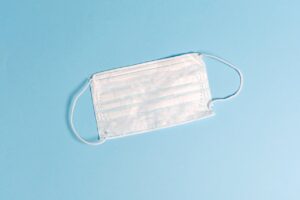
- Face masks: These are available in various forms, including paper and fabric. Such masks need to be fitted over the wearer’s face to protect the nose and mouth from inhaling (and emitting if the person is sick) airborne viral pathogens. Such masks are singleuse/disposable and should be properly discarded.
- N95 respirators (as well as N99 and N100): These masks fit over the nose and mouth and offer the best protection for this type of mask because they filter out minute particles. These masks must be fit tested to ensure a tight seal. They are not conducive for wearers with facial hair. They must fit securely, held in place via elastic bands placed around the head or ears. Such masks are generally single-use/disposable.
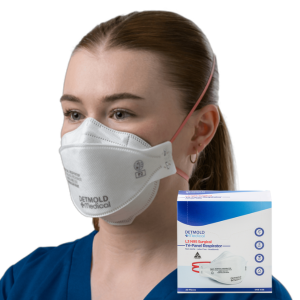
- Powered air purifying respirators (PAPR): These are reusable, full-face shield helmets or headpieces that are covered with a disposable hood. Using a batterypowered blower, they filter the air and deliver it into the headpiece. PAPRs that use a high-efficiency filter claim a 99.97% efficiency rate against 0.3 micron particles. They can be used by people with facial hair.
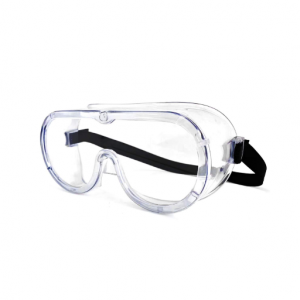
Other face protection devices include elastomeric respirators, which come in half (covers the nose and mouth) or full (covers the face and eyes) facepieces. These reusable respirators are generally made of rubber or synthetic materials.
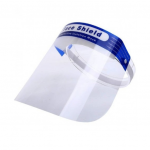
- Gowns/Coveralls: Made of fabric resistant to body fluids, impermeable gowns include long sleeves and generally cover the body from neck to mid-calf. They are usually single-use/disposable. Coveralls are sometimes used instead. Covering the whole body, the 360-degree protection is useful when dealing with patients suffering from highly contagious and deadly diseases.
- Face shields: This type of face protection consists of a clear plastic shield that curves around the face.
- Apron: For added protection, an apron can be used to cover the front of the wearer, starting at the torso and ending about mid-calf. Single-use/disposable aprons benefit the healthcare worker when a quick change is needed due to soiling.
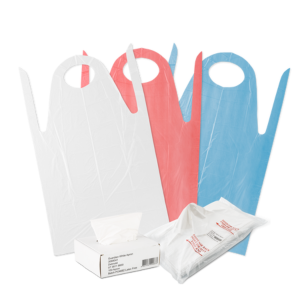
- Gloves: Usually made of thick rubber or latex, medical gloves are disposable and frequently changed. Healthcare workers should test various glove sizes to find the best fit. In addition, latex allergies are fairly common, creating skin irritation. Handwashing and/or hand sanitizer should be used between glove changes.
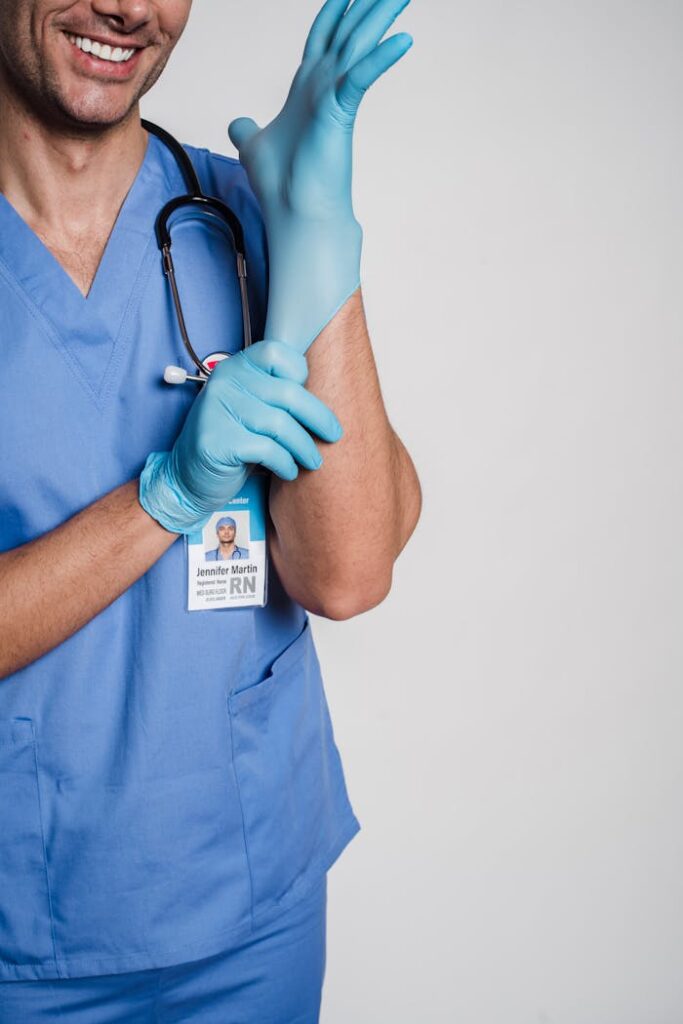
- Goggles: Eyes are prone to contagions as well. Goggles protect the wearer from accidentally spreading a contagion from hand to eye by rubbing it. Most goggles can be decontaminated and reused. If safety glasses are used instead, they must cover the sides of the eyes.
- Boot covers and shoe covers: Such coverings offer protection of footwear when contamination is likely residing on the floor. They are single-use/disposable.

